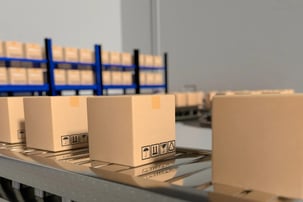Service and product bundling is a game-changing strategy. Buyers find it convenient. Businesses find it accelerates and increases sales. It's a win-win.
Yet, trying to bundle manually is tricky. You need to consider buyer needs and past buying patterns, and configure solutions based on item and option knowledge. Then you have to price, without devaluing individual items. It's a time-consuming and error prone process.
In this blog, we look at bundling as a competitive strategy. And share how to remove the roadblocks that hinder bundling as an effective business strategy.
What is Service and Product Bundling?
Bundling is a business strategy that combines multiple relevant items into a single solution sold at a discounted price. It can increase sales volume and introduce upsell and cross-sell opportunities, as well as boost brand awareness.
Imagine this: A customer wants a product, and traditionally, you'd develop a quote. Then there would be reviews and approvals and pulling together the final version. All while the clock is ticking and the buyer is waiting.
What if instead, you shared a pre-configured bundle that included the right product and service at a discounted price? It's convenient and compelling. That is the sales power of bundling.
Three types of bundling dominate sales: pure, mixed, and cross-industry. Pure includes products only available with the bundle. Mixed bundling offers products individually and bundled. Cross-industry brings products together from different industries.
By understanding your buyers purchasing habits, you can craft bundles that resonate with specific buyers and buyer groups.
Examples of Service and Product Bundling
Bundling is not about just throwing items together. Bundling is a strategic approach that creates value for buyers, while boosting your bottom line. Think Shampoo and Conditioner, Internet and Cable, Burgers, Fries and Soda.
But you won't just find bundling in the consumer industry. From Energy & Renewables to Manufacturing, you can find effective examples of bundling no matter what business you are in.

- Pure Bundle. A construction remodeling company might bundle industrial kitchen renovation with a high-end appliance package. The buyer has a one-stop-shop experience that reduces decision fatigue. While the company guarantees everything is compatible, avoiding installation issues.
- Mixed Bundle. An energy and renewable (E&R) service provider might bundle an environmental impact assessment with a product design optimization. The buyer gets the potential environmental impacts paired with sustainable solutions. While the service provider demonstrates their commitment to sustainability to attract eco-conscious clients.
- Cross-Industry Bundle. Manufacturers might bundle smart factory equipment with a subscription to a cloud analytics service. The service provides valuable insights and data-driven optimization for the buyer. While partnerships with cloud service providers create a new revenue stream for
manufacturers.
Suggested content



Benefits of Bundling Services and Products
Businesses are always looking for ways to stand out, to increase sales and build stronger client relationships. Compelling bundles create the perception of value without the hassle, making buyers receptive to more. They also boost brand awareness and perception, encouraging them to return for future purchases.

In fact, studies suggest that bundling creates a "sticky" ecosystem. One that can increase your average order value and boost your client retention. Transforming you from just another vendor into a go-to trusted partner.
- Maximize Deal Size. Bundling creates a more valuable package, justifying a higher overall price. Bundles are also convenient, encouraging buyers to explore additional items and purchase more than initially planned.
- Increase Upsell & Cross-Sell. Offering even more comprehensive bundles nudges buyers toward a higher spending tier. Bundles also expose buyers to items they hadn’t considered, creating an opportunity for cross-sell.
- Easy Add-Ons. Strategically selected add-ons are another bundling opportunity. Specifically when add-ons are relevant to the purchase. This makes add-ons seem like a natural extension of their original purchase.
- Increase Sales. Buyers value the simplicity of bundling. It saves them precious time and effort, instead of searching and working with different vendors. This accelerates sales cycles and boots client satisfaction.
- Competitive Edge. Bundling distinguishes you from competitors offering similar services and products. By crafting unique, value-driven bundles, you attract new buyers looking for comprehensive solutions.
- Client Loyalty. Bundles can build stronger client relationships by providing a sense of value and convenience. They demonstrate you understand their needs, and are committed to providing one-stop-shop, comprehensive solutions. This builds stronger, more loyal client relationships.
Service and Product Bundling Challenges
Crafting compelling service and product bundles can be a strategic win. But there are some hurdles to overcome. For example, manually managing the sheer complexity of bundles, their intricate combinations and pricing across all sales channels.
This is a time-consuming and error-prone process. One that actually hinders your ability to efficiently deliver the benefits of bundling.
Here is a glimpse of the hurdles and problems faced by teams who embark on the manual bundling path:

- Configuration Inconsistencies. Human error can deliver inconsistencies that compromise the functionality or compatibility of your solutions. In the eyes of the buyer, inconsistent bundles can lengthen the sales cycle.
- Price Discrepancies. Manual data entry and pricing calculation is also a recipe for errors, incorrect charges and lost revenue. Not to mention the time consumed resolving discrepancies. Price discrepancies can quickly diminish the value of products.
- Quoting Errors. Manually quoting bundles requires a deeper understanding of how components work together. Quoting errors damage buyer and client trust, leading to decision delays. Or worse, cancellations during the sales process.
- Sales Slow-down. Quoting bundles requires data entry and manual calculations that slow down the sales cycle. This bogs down your team, creating missed opportunities and cash flow delays.
- Growth Roadblocks. Manually bundling slows down experimentation and innovation. The manual process simply lacks the flexibility to adapt and grow with your business.
Automation Software for Service and Product Bundling
The good news is, there’s a powerful antidote to the headaches of manual service and product bundling: automation.
Automation uses your business rules to pre-define logic for building your bundles. Now your team can focus on crafting more innovative and strategic bundle options faster for your clients.
- Accurate Configurations. You define the bundling configuration rules across all sales channels. Predefined bundles provide a framework for sales reps. This ensures accurate combinations and consistent pricing every time.
- Precise Pricing. You define the bundling pricing rules and discounts across all sales channels. This eliminates errors and ensures accuracy for even the most intricate combinations.
- Faster Quoting. Gone are the days of manually piecing together bundles and quotes. By pulling in pre-configured bundle details, including associated pricing, your team accelerates quoting so you can close deals.
- Increased Sales. Guided selling suggests relevant upsells and cross-sells based on the buyers selections, as well as past purchasing behavior.
- Free-up Valuable Time. When you automate bundling, you skip the manual effort. This gives your team more time for building client relationships, and tailoring even more bundles for more clients.
- Boost Client Satisfaction. Fast, accurate quotes build trust with your clients, strengthening your reputation for delivering reliable solutions. That builds client loyalty while attracting new clients.
Takeaway
In today’s competitive business landscape, bundling has emerged as a win-win for businesses and clients. Yet, like so many marketing and sales strategies, bundling comes with its own set of hurdles.
Automating your sales process overcomes those hurdles. Just as bundling can overcome buyer frustration, combining your sales process with automation can overcome bundled sales slowdowns. Ready to accelerate your quoting, increase your win rate and boost your bottom line?









